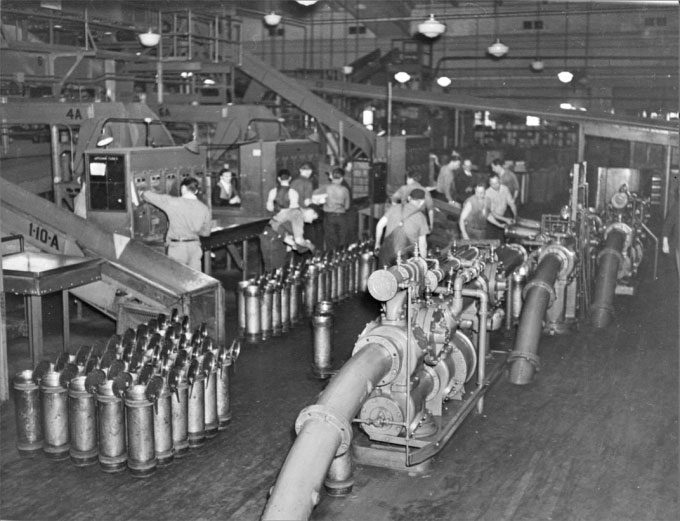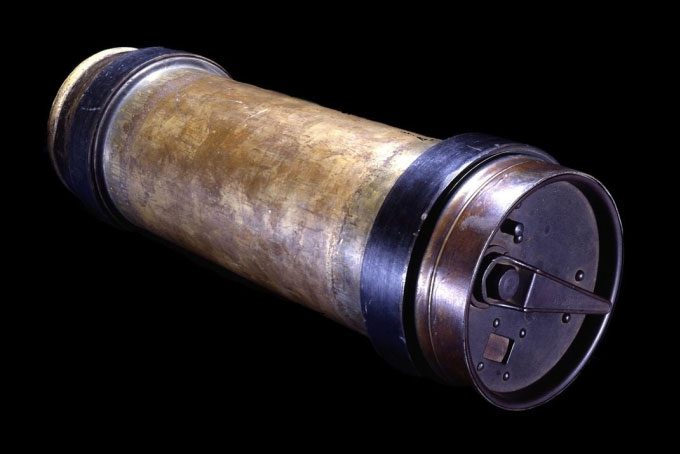About 100 years ago, New York had over 43 kilometers of pneumatic tubes running underground beneath the city, enabling swift mail transport regardless of the weather.
A variety of unique methods for transporting goods and mail have emerged throughout human history, focusing on speed and convenience. The underground pneumatic tube system is one of the most fascinating methods that appeared in New York City over a century ago, as reported by Smithsonian on December 22.

The mail tube transport system ceased operations in the 1950s. (Photo: USPS).
This system was utilized to transport mail to various buildings throughout the city via a network of underground tubes. Compressed air or vacuum suction would push or pull cylindrical containers moving at speeds of up to 56 kilometers per hour. Workers operating the system were nicknamed rocketeers.
On October 7, 1897, the United States Postal Service (USPS) completed its first test with the pneumatic tube system in New York City. The first mail container took 3 minutes to complete a round trip of nearly 2,300 meters from the main post office to the New York Produce Exchange. The box contained a Bible wrapped in the American flag, copies of the U.S. Constitution, and the inaugural address of President William McKinley. The system gradually expanded, ultimately stretching over 43 kilometers, transporting millions of pieces of mail across Manhattan and Brooklyn each day.
By 1915, many major cities in the U.S. had installed pneumatic tube systems, including Philadelphia, Boston, Chicago, and St. Louis, according to the Smithsonian National Postal Museum. In fact, Philadelphia is believed to be the birthplace of this system. Tubes were installed there in 1893 to facilitate mail transport between post offices. In total, approximately 90 kilometers of tubing existed underground in the U.S.
According to the Postal Museum, a mail route that once took 40 minutes in New York was reduced to just 7 minutes thanks to the pneumatic tube system. This system was particularly useful in extreme weather conditions. “New York streets were almost impassable. But businesses in New York still received important mail on time. The pneumatic tubes helped deliver mail,” the New York Times reported. It was even said that the tubes successfully transported a live cat at one point.

Cylindrical containers used for pneumatic tubes in New York City in the late 1940s and early 1950s. (Photo: Smithsonian National Postal Museum)
As many as 200,000 letters were transported through the tubes every hour. Each route had two tubes—one for sending and another for receiving. They were located 1 to 4 meters underground, with some running through subway tunnels. The tubes were lubricated with oil to facilitate the movement of steel mailboxes. The boxes were 60 cm long, covered with felt and leather at both ends to ensure airtightness.
The Postal Museum noted that the mail system was shut down during World War I to reallocate funding for the war. Afterward, only New York and Boston resumed the service. However, the increasing volume of mail, high operational costs, and urban development rendered the system impractical. By the 1950s, the pneumatic system ceased operations.
Today, most of the tubes lie dormant beneath the streets of New York. A portion of the city’s tube system is still preserved at the Old Chelsea Post Office. Many tubes have been excavated and destroyed in previous decades. In 2001, experts attempted to install fiber optic cables in the tubes but were unsuccessful. The system now exists only as a part of the city’s history, becoming a relic of a technology that many once believed would be foundational for the future in the early 20th century.




















































